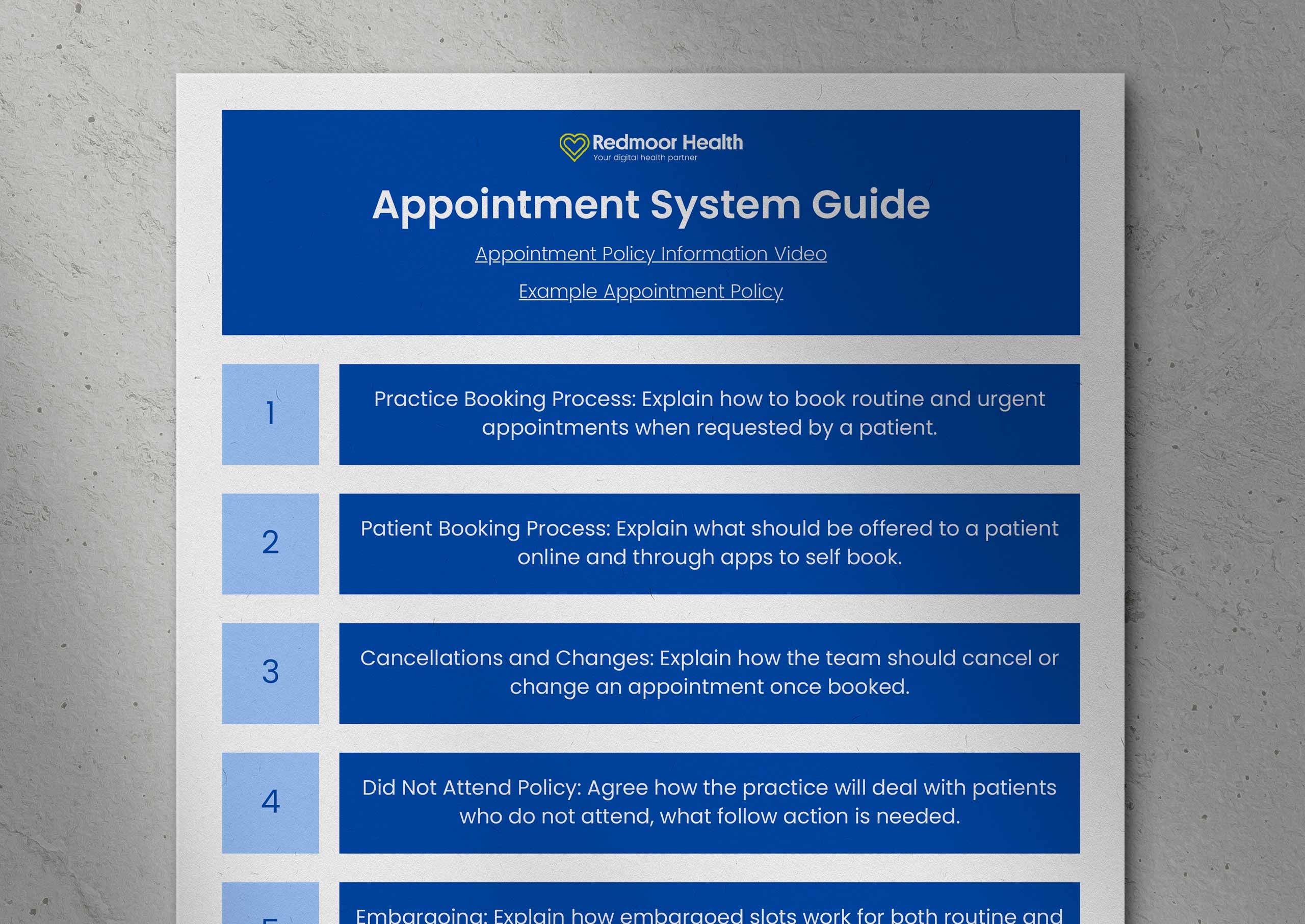We’ve all been there – calling our GP practice, waiting endlessly on hold, only to be told there are no appointments left. It’s frustrating, right? But how often have we actually been given clear instructions on what to do when we need medical help? Do we know who we should be seeing, or how we can play our part in easing the pressure on GPs and helping to preserve the NHS for the future?
Recently, I had the opportunity to lead a programme to redesign the appointment systems for a region in the Midlands. Our efforts didn’t go unnoticed – we were highly commended at the prestigious HTN Awards for ‘Best Use of Digital for Primary Care’! 
What We Discovered – The Appointment System’s Secret Problem
While digging deep into the mechanics of appointment systems, I uncovered something surprising: many patients had no idea how these systems actually worked. It wasn’t that they were trying to be difficult – it’s just that they were left in the dark. Imagine walking into a shop and having no clue where to find what you’re looking for. That’s what it feels like for so many patients. The system isn’t a secret, so why does it feel like one?
This realisation sparked an idea – what if every patient had access to a simple, clear guide from their GP practice explaining how the appointment system works, and who they should contact for different types of issues? Just think of the impact. Fewer unnecessary phone calls, less frustration for patients and staff, and ultimately, a more efficient system that works for everyone.
The Power of Education
We recognised that by educating patients about how to navigate the appointment system, we could empower them. Patients don’t need to be left guessing – they just need the right information at the right time. Imagine the difference it would make if practices proactively shared who the best healthcare professional is to see for different conditions, how long wait times might be, and what other options might be available if the GP isn’t necessary.
And then, think about the next step – giving patients the ability to book online appointments once they’re educated about the system. It’s a win-win situation. For the practice, it reduces workload, and for patients, it offers convenience and clarity.
Introducing the Appointment System Guide
From our collaboration with practices and the experiences shared by our team, we created an Appointment System Guide. This guide is designed to be used by GP practices as a foundation to develop and share clear, understandable policies with their patients. The idea is simple: by explaining how the appointment system works, patients will have a clearer understanding of what to expect, who to contact for specific issues, and why they might not always be able to see their preferred GP. It turns what was once a confusing process into something transparent and manageable.
By equipping practices with this Appointment System Guide, they can create tailored policies to share with their patients, improving communication and reducing unnecessary strain on practice teams. It helps patients understand how the system operates, reducing frustration and ultimately leading to better care for everyone involved.
The guide is now available through our Digital & Transformation Network, a free-to-join community where practices can access resources, share knowledge, and collaborate on digital transformation efforts within primary care.

Why This Matters
Patients are not trying to make things harder – they just don’t always know what to do. The information gap between practices and patients creates unnecessary friction. If we, as healthcare providers, don’t take the time to explain the system, then it’s no surprise when patients feel frustrated or confused. This isn’t about telling patients what they can’t do – it’s about empowering them with what they can do.
Take a moment to think about your own GP practice. Are they doing enough to guide you through the system? If not, why? What’s holding them back from giving patients the knowledge they need to use the system properly? Clear communication is a simple yet transformative solution. When patients are informed, they’re less likely to make unnecessary calls or demand to see a specific GP for something that could be handled by another clinician.
The Future of Appointments in Primary Care
This project has shown me that improving appointment communication is more than just about logistics—it’s about creating a better experience for both patients and practices. The award we received is a testament to the hard work that went into transforming this system, but more importantly, it’s a sign that we’re on the right track towards a brighter, more efficient future in primary care.
With our Appointment System Guide and the support of the Digital & Transformation Network, we’re trying to ensure that patients and practices are working together more effectively. By giving patients the tools to understand and navigate the system, we’re taking an important step toward relieving the pressure on GPs and improving access to care for all.
Let’s keep the conversation going – because the future of healthcare isn’t just about technology; it’s about communication, education, and empowering patients with the knowledge they need.

Blog by Clare Temple
Clare has been the lead administrator in a rural GP Practice for six years until joining the Redmoor team, where she has focused on implementing new digital solutions and techniques. These include Online Consultations, GP Online Services and website administration, where Clare has focused on making patient communications and flows more efficient. Clare has helped practices to develop things such as their appointment books, summary records, and optimise their clinical system, and is now using this knowledge to develop the Digital Journey Planner with Redmoor Health – which is all about supporting practices on their digital journeys. Clare understands the pressures that GPs are under at the moment and advocates the value that digital solutions can provide in easing some of this pressure.
Make an enquiry


